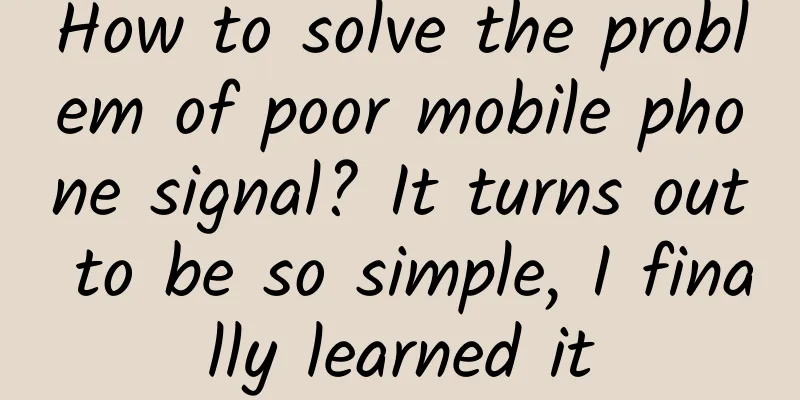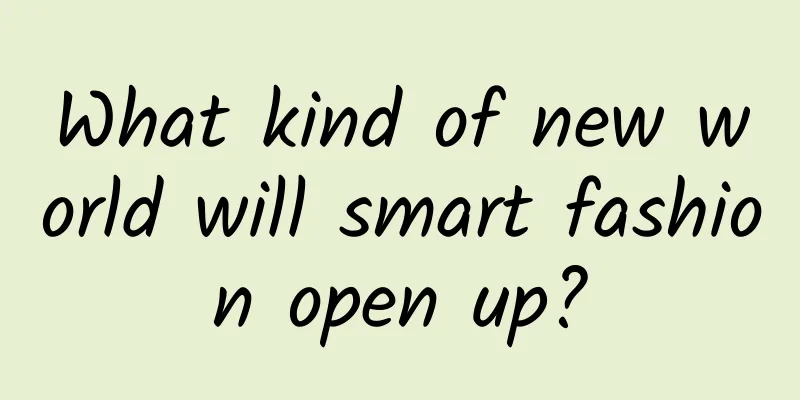Brand Innovation Theory: Social Marketing

|
Although the ladder (model) of the "new community" is given in "Brand Innovation Theory: Folding the Crowd - "New Community" Innovation Model: Put Down the Funnel and Lift the Ladder (3)". However, when you actually face these new community roles and new social relationships of fluid symbiosis; when you truly transform yourself from a relationship connector to a relationship value-added provider; when you truly want to help young people break through the filters and enter the present, you may not know where to start. The membership system is not a "new community", the WeChat micro-business group is not a "new community", and circle marketing is not a "new community". Brand Ape's "new community" Tribe is - the brand brings together a certain type of people with clear values. They empower each other, connect with each other, build a community together, and act together for a noble cause, continuously innovate, and evolve together. In order to help you build a world-class "new community", Brand Ape provides a simple methodology: four pillars + nine rules. Today, we will discuss the four pillars of the "new community" - based on "common values", clarifying "noble cause", clarifying "positioning", and formulating "action program". For a new consumer brand that hopes to break through from the "new community", this framework answers four questions:
In other words, to attract more partners to join the "new community", start by answering these four questions. 1. The foundation of the “new community” – founded, unified and cohesive by valuesWe all want to be part of a group of people who share our values. Written language, lifestyle, clothing, work and consumption, similar interests and hobbies, even living in the same community and having children go to the same school, none of these are important anymore. What we hope for is that others also value what we value, such as: mutual respect, honesty and sincerity, self-confidence and independence, and "making the world a better place"; and that others also despise what we despise, such as: arrogance and indifference, lack of self-discipline and waste, etc. It feels like we have joined a group where we can be known and understood without having to explain ourselves; with this basic understanding, we feel more comfortable and safer in our community. "Common values" are the best foundation for achieving this goal and the primary reason that brings us together. Imagine that when you join a community, even if there are many people with common interests and hobbies, it will be difficult to integrate into it if your values are inconsistent. For example, a new community of culinary masters cannot become a community of chefs that support each other without the values of "transparency and sincerity"; or, some chefs with "ecological and environmental protection" values will boycott those who "like to cook shark fin and wild animals", leaving you at a loss as to what to do. Looking at the "super-sensitive and heavy-coding" Generation Z, they are willing to join a community, not for the purpose of accumulating connections or mutual benefit as in the past, but for a true sense of identity and belonging based on spiritual resonance. For example, Douban Group is not dead, that day life paradise, dehydration APP, and the universal straight male community "Hupu". For example, members of various fitness communities such as Lululemon, KEEP, and Super Monkey join because there are various training courses they like, and they are willing to stay because the values advocated by the brand and their identification with the coaches allow them to integrate into this group. There is no doubt that a community based on "common values" is the real "new community". At this point, he can be understood as a tribe, a community of interests, a party, a brand image, and an IP with soul. "Common values" not only play a role in this, but also serve as the first hurdle for screening and stratifying new communities. If we convey our values from the beginning, new members will be able to realize earlier whether this community is suitable for them, or they may learn about other lifestyles derived from these values through participating in the community. Advertising slogans are an extension of values. Aranya carved "Life can be more beautiful" on the stone of its gate; lululemon's community has its own philosophy of "sweat life". Whether or not there are "common values" is the biggest difference between "new communities" and traditional community marketing , membership marketing, and circle marketing. PS: "Common values" generally come from the values of a company or brand. They can be consistent, or a part or extension of them. They can also be jointly achieved by the founding members of the community. 2. Carved on the front of the "New Community" - clearly stating the "noble cause"There was a sign at the gate of Plato's Academy - "No one who does not understand geometry is allowed to enter", which became the basic rule for admission. A market study in Europe and the United States in 2013 concluded that "more than 73% of users prefer brands with clear positions and clear global roles "; in the past 10 years, you must have also discovered that almost all top brands will intentionally or unintentionally express their "noble causes" and integrate "new communities" into them.
The "noble cause" to the "new community" can be understood as the mission to the brand, answering from a high-level perspective why the "new community" exists. 1. Why does a startup brand and a small "new community" also need a noble cause?First, "noble cause" is becoming the background of the progress of the times and the consensus of social progress; Second, young people today, who have a global vision and are more self-aware, attach more importance to "noble causes". They want to develop the world as well as protect it. Even if it is insignificant, they hope that their behavior and consumption are meaningful and valuable; Third, a more fundamental consideration is that, whether from the philosophical perspective of infinite games or from the perspective of Maslow's need curve, "noble cause" is the correct direction for the progress of human nature. Therefore, in an era of intensified value differentiation and conflict, any organization, including "new communities", needs to re-understand its own value and significance to society. 2. The difference between “noble cause” and valuesThe “noble cause” is not pointing to why? ——Why, from the past, is a statement about who we are, a combination of values and beliefs. The “higher cause” is about the future —determining the direction in which we are heading and describing the world we want to live in and build. In fact, everyone can have a "noble cause". We can initiate it ourselves, or choose to join others and make it our own. We can persevere in building it in the way we like, and we can also make continuous corrections as we go along. You will see that even without a perfect "new community" system, "noble causes" play a vital role in the construction of various new consumer brands: Sandunban's Interstellar Return Plan (empty cups for gifts) VS Nestle, Tianzhen Juice's Little Hat Big Love Plan (volunteer service) VS Minute Maid, Manner Coffee's Environmental Guardian (5 yuan off for bringing your own cup) VS Luckin Coffee..., because of these noble causes, they attract people with common beliefs and eventually become the source of their community's core strength. It is therefore understandable that “new communities” are more likely to advance noble causes than brands and businesses. 3. The "secret weapon" of a "noble cause" - supporting somethingThere is a "secret weapon" to express "noble causes" - that is "support, not oppose" .
"Opposition" makes us cling to things that already exist, thus inducing us to react; "Support" invites everyone to work together to advance a cause, which will make us focus on the future that has not yet been realized and stimulate our imagination. Imagine, from "poverty alleviation" to "common prosperity". The former creates a common enemy - poverty, which we are against, a winnable goal, a finite game, which makes us believe that we can solve poverty once and for all; the latter is positive, optimistic, cohesive, adaptable, greater and broader, and gives us a reason to keep moving forward. It is really important to "support, not oppose." If you want your "new community" to grow and last in today's society, please engrave "noble cause" on the gate. Those who share the same ideals will naturally pay attention and stay, and may even become one of the driving forces for your growth. 3. The “positioning” of the “new community” — Who am I? What new value do I provide?"Principles first, interests later" is what makes the "New Community" different. We also know that "values and noble causes" alone cannot attract people to join the community. It must address certain growth needs. Think about this question: How would you describe your membership in a community? If members are not told "who I am" and "what they will gain from participating in the community", how can they be attracted to join? There are generally three steps to brand (product) positioning: first, segment the population; second, understand the needs; third: what solutions we provide. 1. The “positioning” logic of “new communities” is completely differentFirst of all, the “new community” is “ gathering a group of people to do one thing ” (traditional community: you do one thing for this group of people), so the “I” of the new community is the “we” of the community as a whole composed of the brand and members. Secondly, the "new community" is a fractal of the brand. The new community only needs to attract a part of the users who agree with the values. On the other hand, because the new community is a fractal, it can be fractalized into multiple different communities based on the different values provided. Finally, the "new community" needs to lead this group rather than cater to them; create new value rather than solve old problems; help members grow rather than provide more privileges and services. In other words, the new community focuses on people and their lives rather than specific things/problems. "Who am I" and "What value do I provide" are not only "positioning", but also a way of thinking.
Let’s take the community problem raised by a friend in the comment section as an example: He started a professional video and industry data download platform and established an exclusive service community for member users. “But as the members’ requirements became higher and higher, and even a little unreasonable, I fell into a somewhat embarrassing situation.” How to solve embarrassment if we adopt a "new community" mindset? 2. Clarify the “positioning” – why you invite members to join the communityTo give more discounts and have more privileges? Or is it sharing of internal top-secret information? Is it to provide advice to the community and help the community improve? Or do people who love this profession help each other and make progress and grow together? Example: Answering the question “Who am I?” - We are a community for the exchange, collaboration and growth of professional knowledge (of a certain type). We work together with like-minded friends to build and create together. Define your community from a higher dimension, and transform the past service community into a new meaningful community with a new form of individual learning and communication. When topics such as sharing and sharing, growth and change, innovation and progress are continuously brought up, you will also be more likely to reject demands for privileges and services. Give and Get - members who do not/do not participate in creating new value will be excluded, the sense of belonging and cohesion of super members will emerge, your motivation to form a community will be doubled, and the new community will have the possibility of healthy growth. The significance of clarifying "who I am" is not only to bring together people with the same values, but more importantly to complete the second screening of super users, and thereby continuously create and try new community services, design new experiences, and thus promote the healthy growth of the community. 4. Description of the “new community” - how should I act?Gather a group of people to do one thing, help members grow and achieve a noble cause? But if members are not told what to do and how to do it at any stage, how can the partners be brought together? For example, there are many countries that have shouted similar slogans such as "poverty alleviation" and "common prosperity", but only China has received a response from the entire society because it has time, steps, decomposition and action. Most companies and brands, even if they are well-intentioned, often believe that they should "make money first, then do something"; "new communities" have a different view - doing something to bring members together, and even turning it into a lifestyle. Go running on the weekends, write an article every seven days, eat vegetarian food once a week... Around these actions, there can be more down-to-earth, more creative expressions and interactions, which can create a close new community. Looking back at the previous professional video platform case, how should I act? Try setting up a points pool/reward to encourage community members to help, share and advise each other; or create more interesting professional information sharing, self-made content, short videos, and daily demos; you can also move from online to offline, with lecturers giving lectures, on-site simulations, etc. to create a more immersive experience. I want to talk about Yanjiyou Bookstore. Yan Jiyou was the first to propose using bookstores as a "connection" brand, "exploring the connection between people and culture, people and people, and people and life", "convey · life · possibilities"..., its values and ideas are very beautiful, to a certain extent surpassing the Tsutaya Bookstore that "makes proposals for life" and the Eslite Bookstore driven by "humanities and arts". Because of the lack of action, the life experience is not as good as Tsutaya Bookstore, the innovation is not as good as Changsha 12 Hours, the cultural leadership is not as good as One Way Space, the profit is not as good as Sisyphus, and the "humanities and arts" are not as good as Eslite. If the check-in of internet celebrities cannot be sustained, the "store closing storm" is inevitable. In fact, new retail bookstores and "new communities" are naturally compatible. They have opinion leaders, managers, time continuity, and spatial experience. They can connect people with common values and similar interests, spark more inspiration, and jointly create the beauty of life. They can also continuously fractalize "new communities." The important tip Yan Jiyou gives us is that the "new community" needs an action program - goals, steps, breakdown, and action. Based on "common values", clarify "noble cause", define "positioning", and formulate "action program". I believe that the above analysis will allow you to see how and why the "new community" is united together, and you may be able to gain some new inspiration and insights; you may be able to clearly express the insights that you have thought about but not expressed explicitly, which can be your original intention and what you value, or it can be a common understanding among community members. By articulating this clearly, you’ll uncover what brings people together and recognize which users are looking for communities like yours to bring them together to do something. The "new communities" of some super brands have already led the trend, such as LEGO, Aranya, and NIO; more and more new consumer brands have also stood out with their "new communities", such as Sandunban, Highway Store, KEEP, and Super Monkey. They have reached a certain consensus: The "new community" is not about attracting more members and fans to join, but about whether there are like-minded brands to build the brand together. We have entered an era where brands, communities and users co-build each other. Who will be a flash in the pan, who will survive, and who will reach the next level depends on how many partners you fight side by side with. Author: Brand Yuanchuang Source: Brand Yuanchuang (ID: brand-yuan) |
<<: Sogou advertising cases in the medical beauty industry!
>>: Douyin Training Camp Project Practice (Operation)
Recommend
We are all bears, why do only giant pandas not need to hibernate?
The giant panda is our national treasure, and it ...
Interpretation of how to play Tmall Double 11 building activity!
There is no change in the underlying model betwee...
Hypertension medication varies from person to person. Genetic testing can help you shorten the "hard road" of choosing hypertension medication.
Author: Chen Congqin, Sha Zihua, and Ni Erru, Chi...
What do scientists do at night when they are not publishing papers?
This article is a review article published in Gen...
On the development of "Android" in the next ten years
Electronic products, especially the mobile phone ...
A quick guide to becoming a KOL on Xiaohongshu!
It has been two months since Xiaohongshu was remo...
Suzhou SEO Training: Are there any unknown optimization methods for SEO? Are they effective?
When discussing SEO today, technical issues are n...
How to cultivate "user habits" like Didi: Every time you activate, your retention rate increases
For a good product, attracting users is only the ...
How much does it cost to develop a tableware mini program in Mianyang?
How much is the price for developing the Mianyang...
How much does a guitar cost: SEO should build the website according to the preferences of search engines
SEO promotion means to build a website according ...
The current status and prospects of unmanned systems application on the battlefield
At the beginning of the 21st century, the deploym...
Is TikTok worth buying without the algorithm? Technology experts: It will be difficult for buyers to replicate its magic
This article is reprinted with permission from AI...
A good place to drink tea in Kunming shared by a friend. It is recommended on WeChat and is considered a safe and reliable place to drink tea in Kunming.
Kunming tea tasting comes with its own studio. Re...
Analysis of Zhihu marketing in men’s skin care products
"Male beauty economy" is an industry te...
NDRC releases electric vehicle electricity price policy: not expensive
The National Development and Reform Commission iss...









